All the water we cannot see
Only a fraction of the ocean lies at the surface. How can we find out what happens in water that lies underwater?
Publisert 25. November 2025
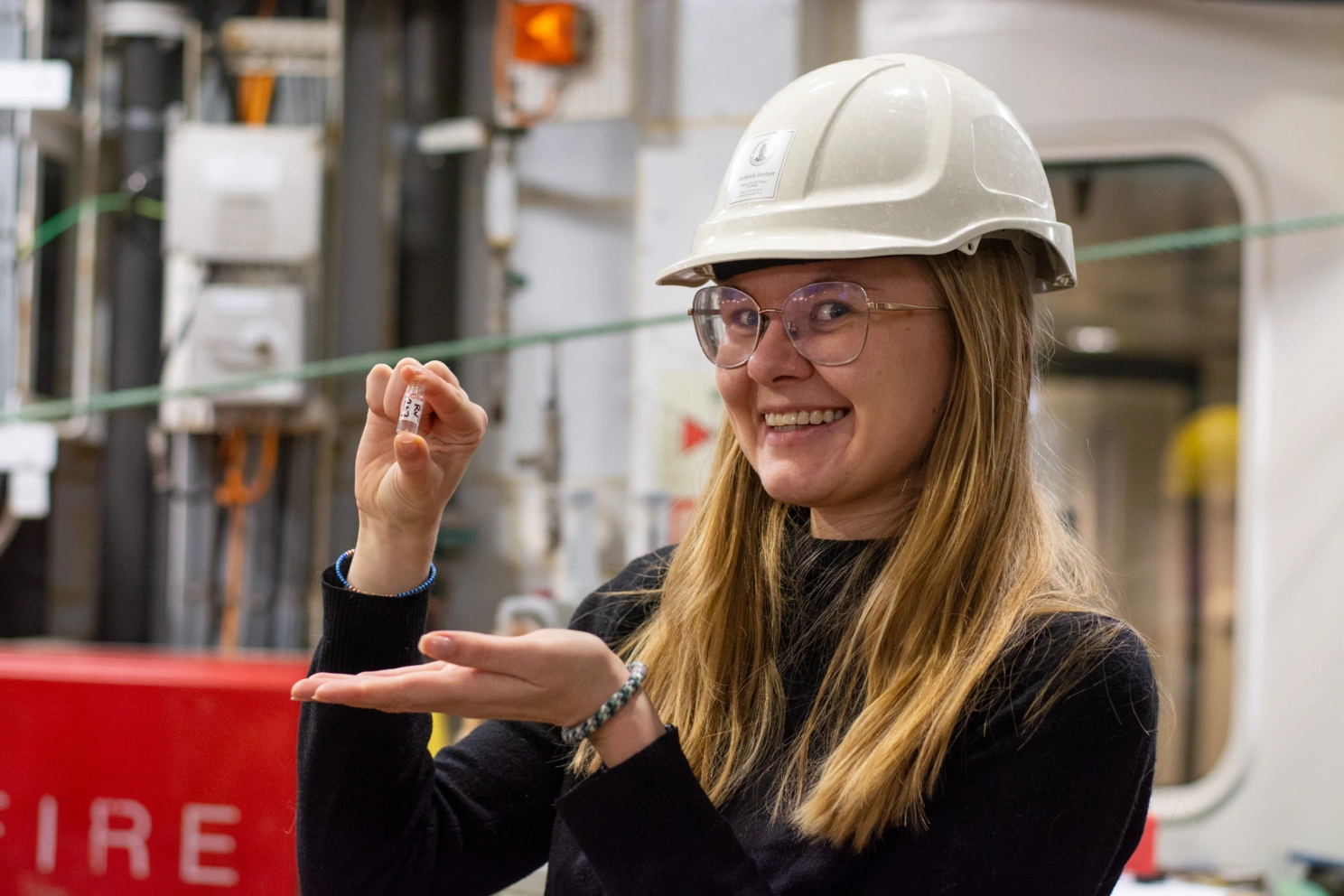
Sometimes a little is all it takes. Idunn Hana from the University of Bergen has collected a tiny water sample. Photo: Ellen Viste
To investigate ocean currents or the ocean's uptake of CO2, knowing what happens at the surface is not enough. You need water from the abyss.
In dark nights and stormy weather it may be difficult to get water samples from great depths, not to mention if ice covers the sea.

Navigating through drifting ice, the RV Kronprins Haakon managed to get close to the east coast of Greenland in February 2025. The researchers onboard collected water samples there and in the open ocean. Photo: Ellen Viste
The research vessel Kronprins Haakon has a latch in its deck – a moonpool – inside a big hangar. Through this latch, crew and scientists may lower instruments into the ocean without having to go outside.
Staying indoors makes the work easier. There is light in the middle of the night, and no one needs to wear mittens, even when temperatures drop far below the freezing point.

Kronprins Haakon's crew gets the CTD rosette up from the sea. Ailin Brakstad from the University of Bergen and the Bjerknes Centre makes it ready for the next step. Photo: Ellen Viste
This is a CTD rosette. It is assembled from 24 flasks that can be used to collect water samples from various depths.
The rosette is lowered through the moonpool and into the ocean. When back on deck, the flasks have been filled with sea water, like a miniature collection of the ocean.
In this video Thorbjørn Østenby Moe explains how a CTD rosette works.
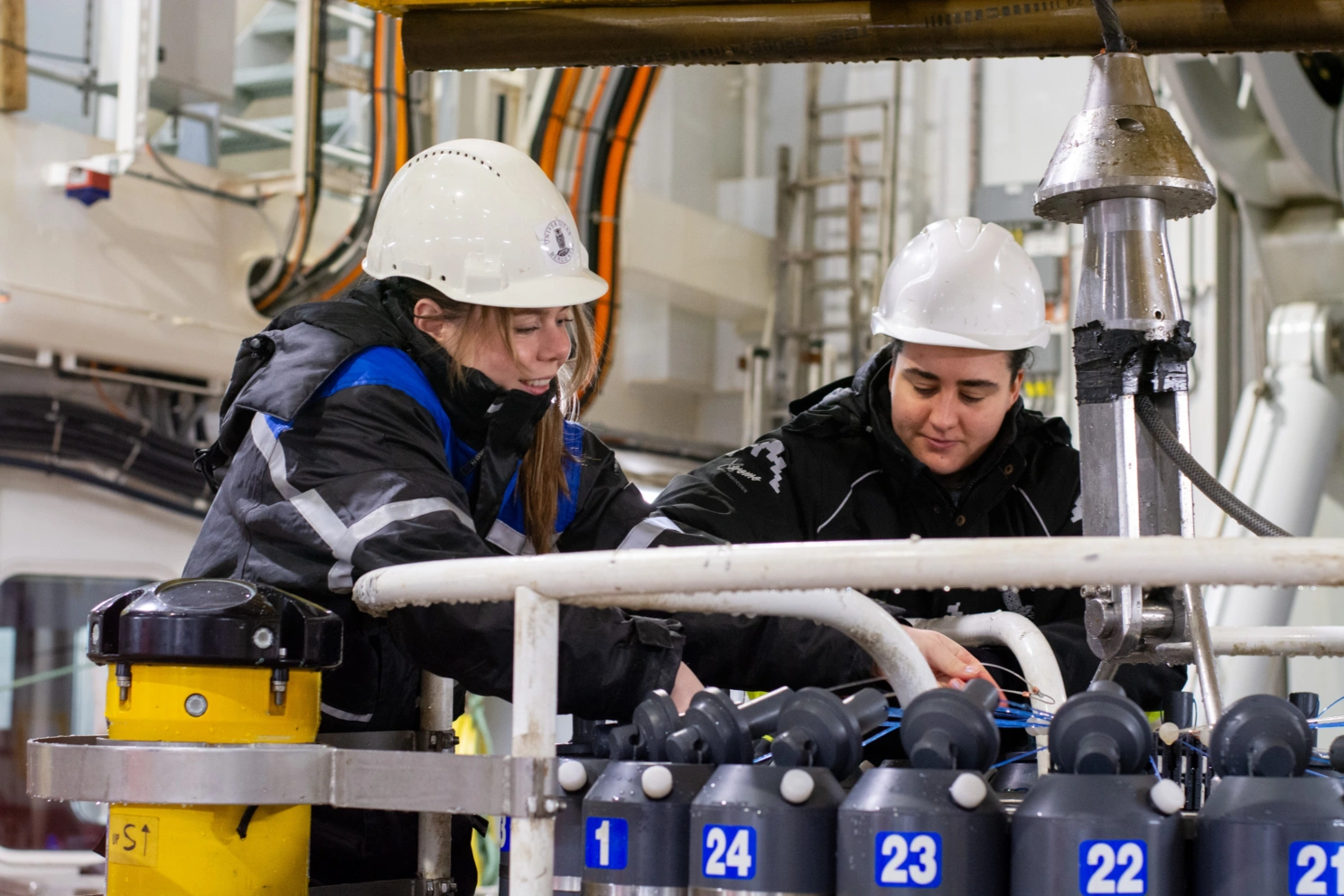
Birgit Klem Rønning Rinde and Erika Giorgi are PhD candidates at the Bjerknes Centre and the Geophysical Institute at the University of Bergen. The number on each flask makes it possible to identify how deep in the water column the water in that flask was collected. Photo: Ellen Viste
As soon as the CTD rosette is back onboard, the researchers are ready for what they like to call the rosette dance. Water samples are to be collected for various analyses, in small and large containters.
One by one the researchers enter the floor to get the samples they need from different depths.
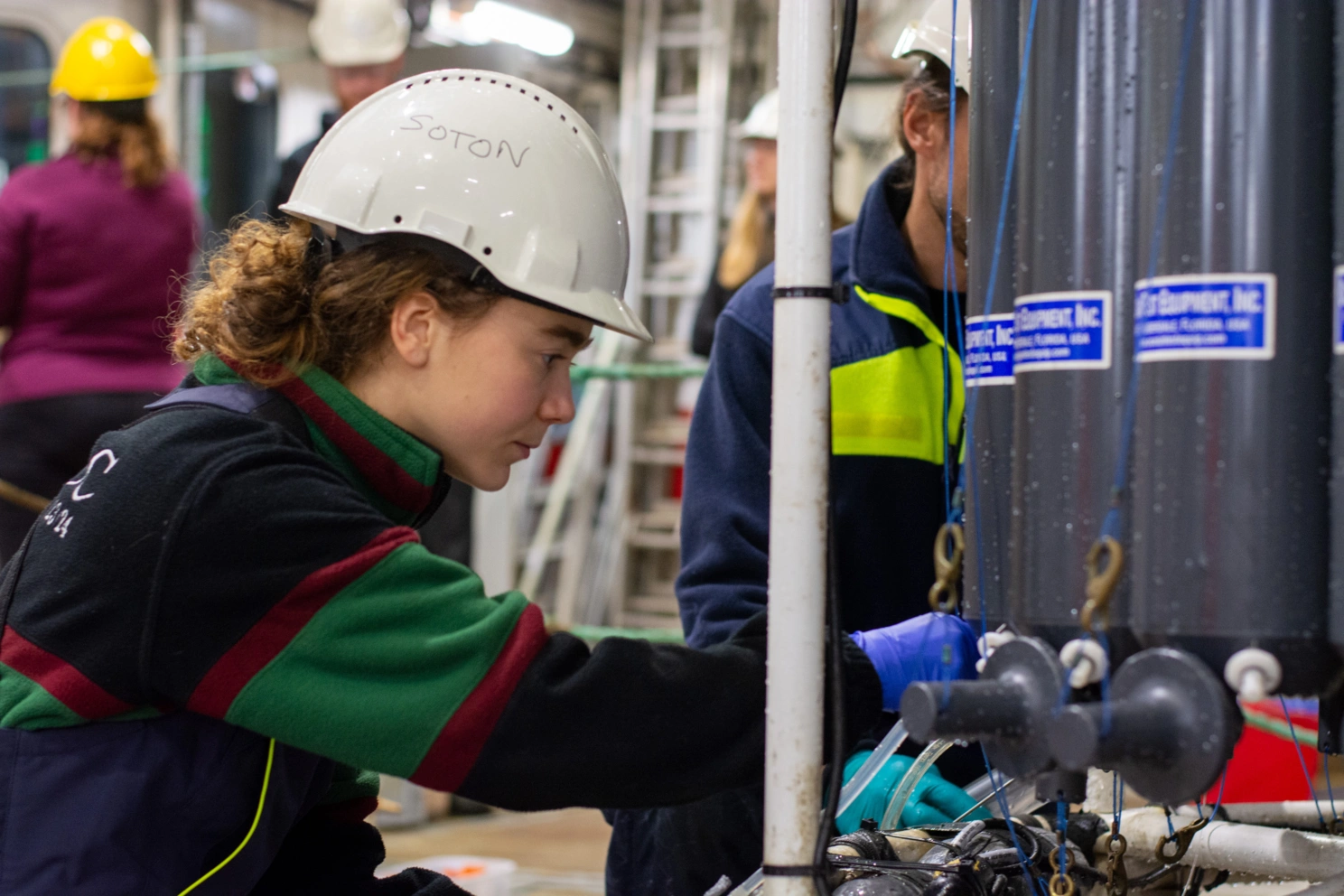
Izzy White from the University of Southampton pours water into a glass container. Photo: Ellen Viste
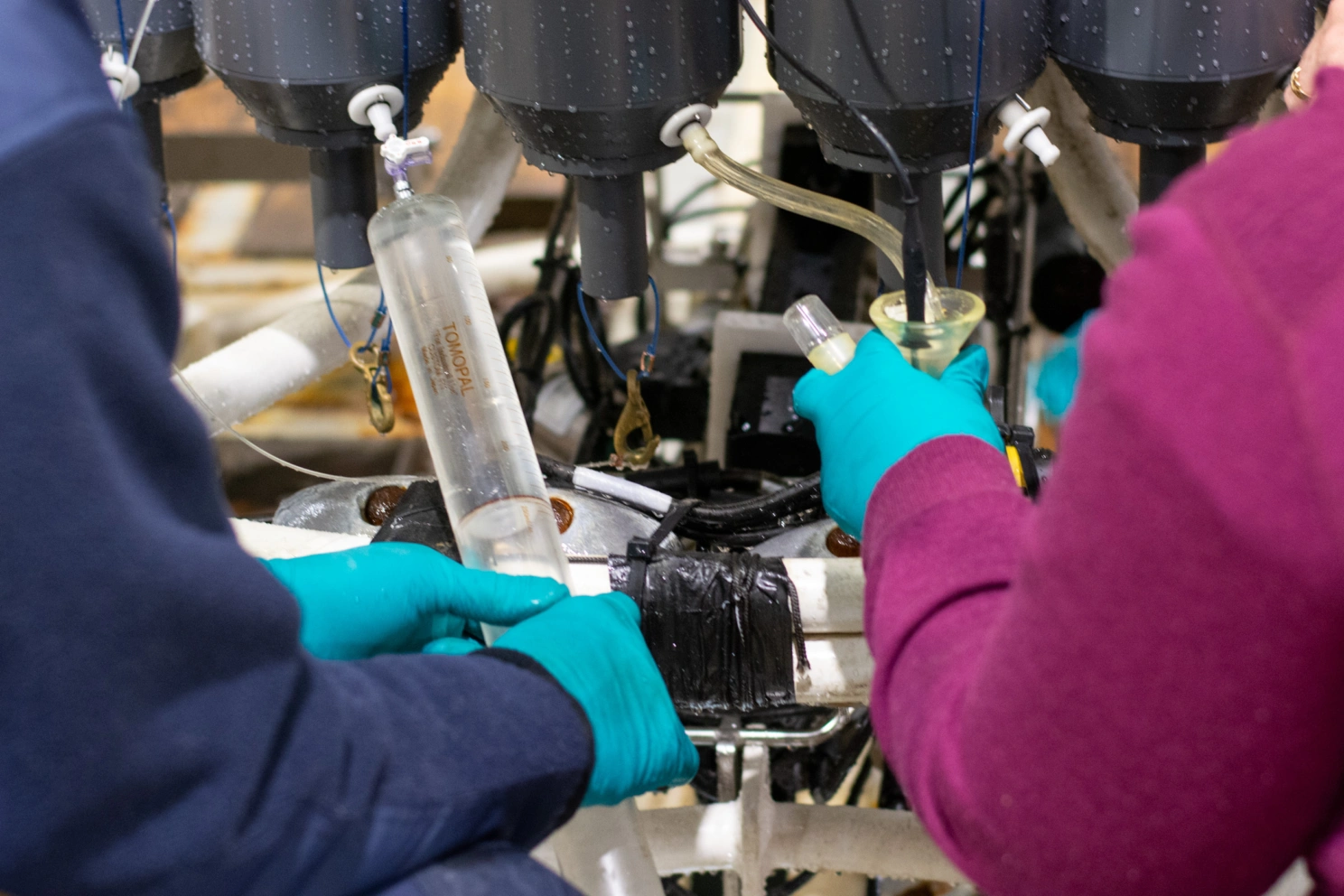
Some analyses require a lot water, others very little. The size of bottles and glass containers are chosen accordingly. Photo: Ellen Viste
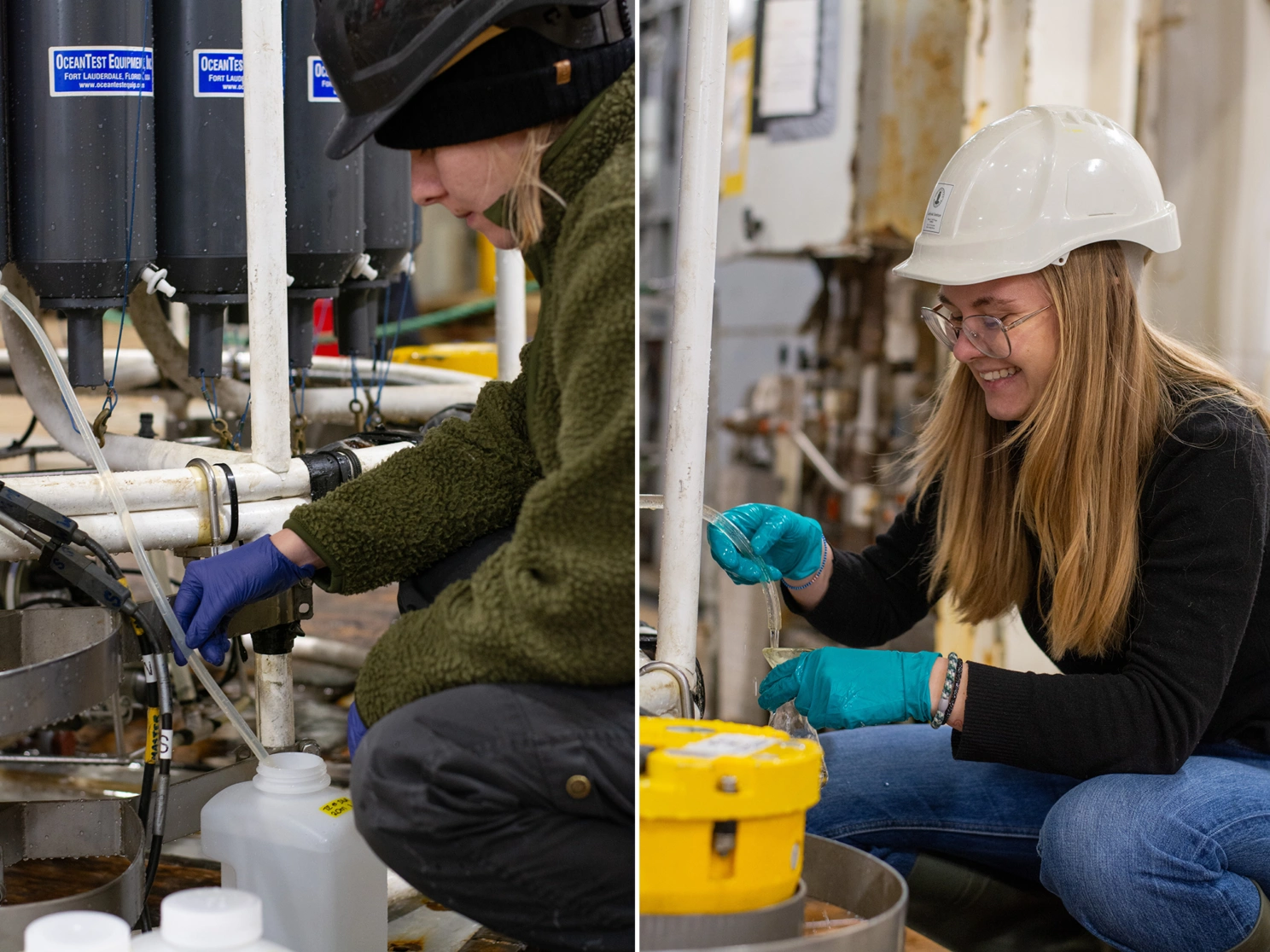
Annika Morische from Aarhus University and Idunn Hana from UiB. Photo: Ellen Viste
The dance floor gets crowded, but every one knows who's turn it is to collect water and from which flasks in the rosette.
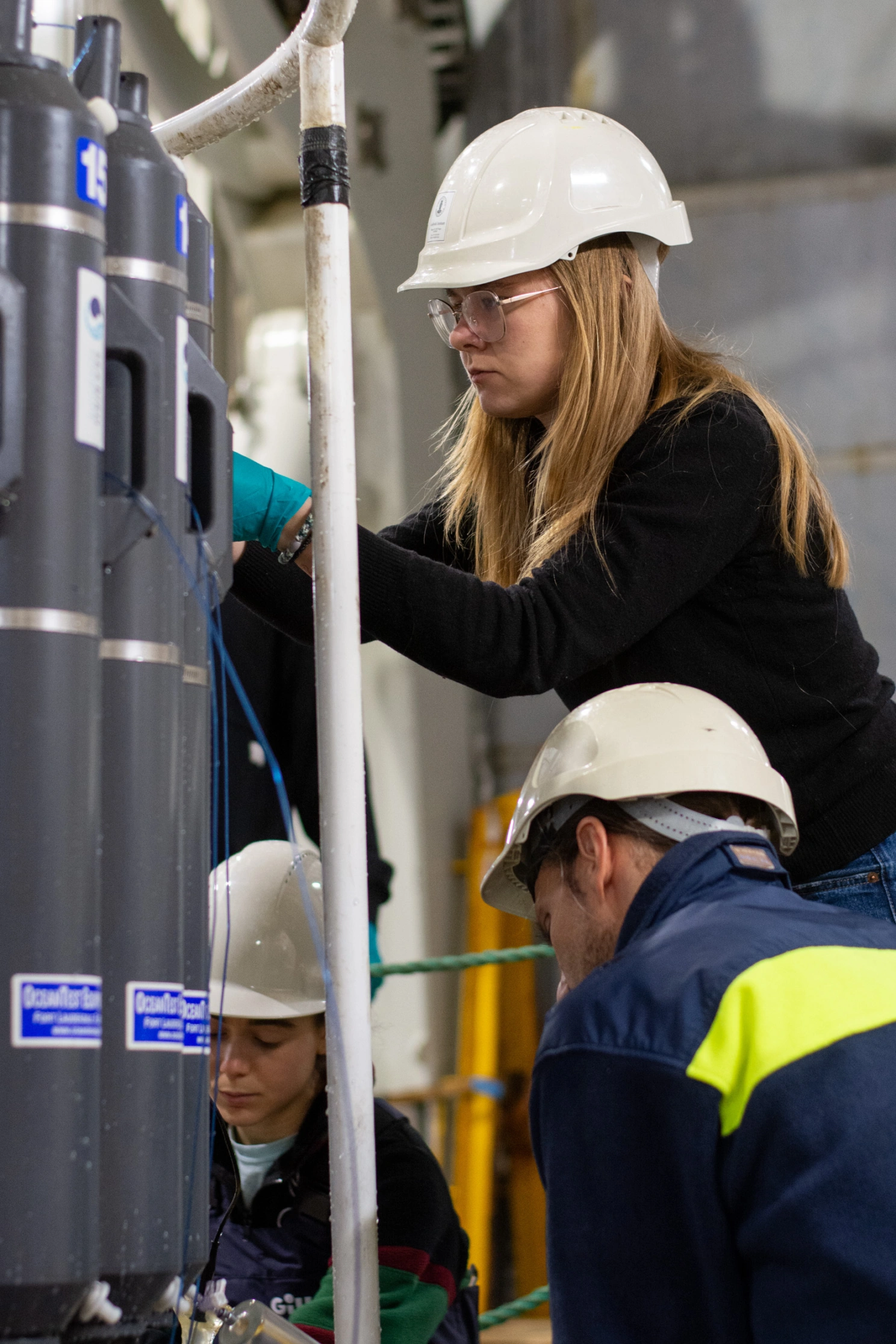
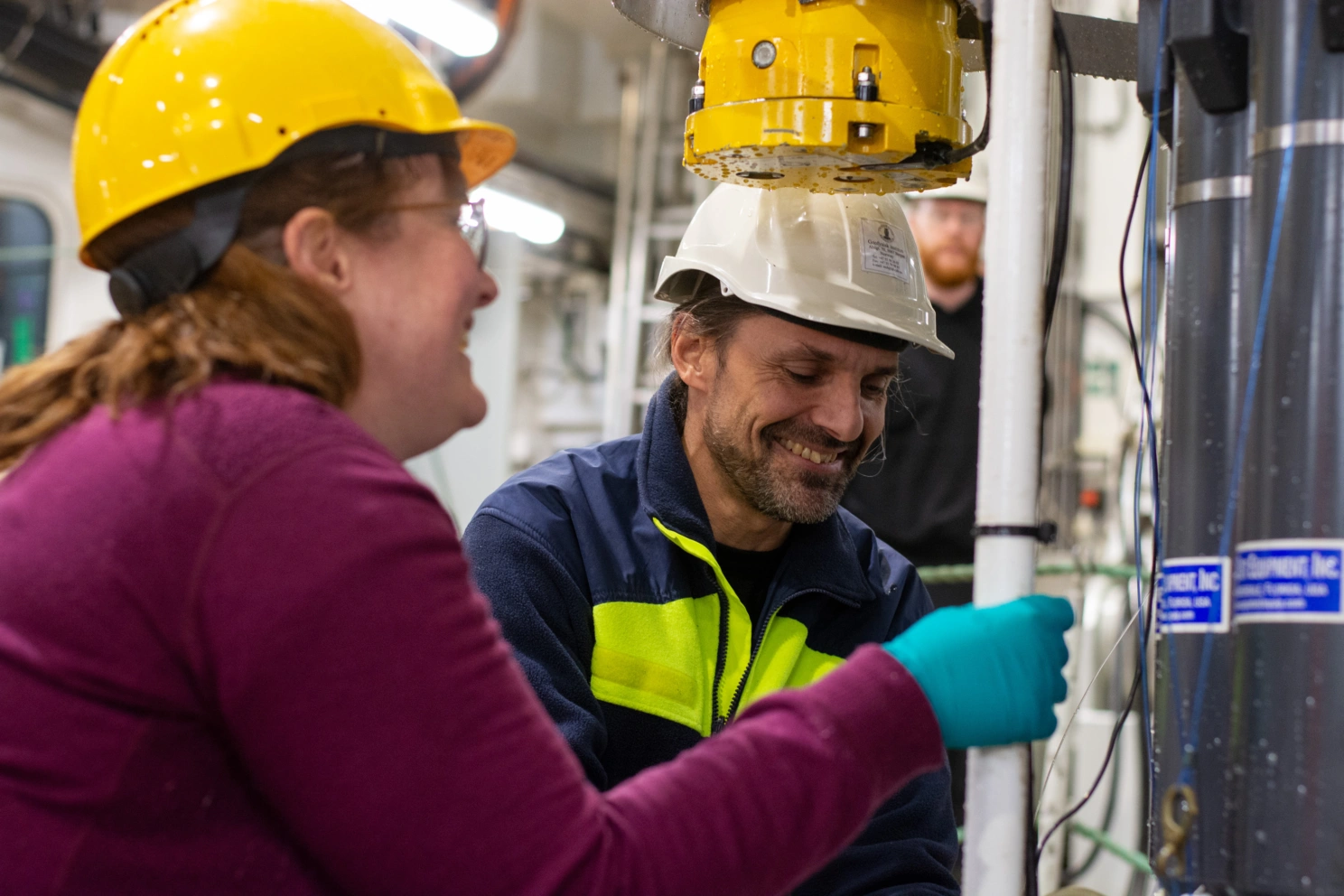
After many cruises Kristin Jackson-Misje and Emil Jeansson, from UiB, NORCE and the Bjerknes Centre, are experienced water samplers. Photo: Ellen Viste Ellen Viste
The ship is already heading for the next sampling station. If the location is far away, the researchers can take their time, but often they need to work quickly.
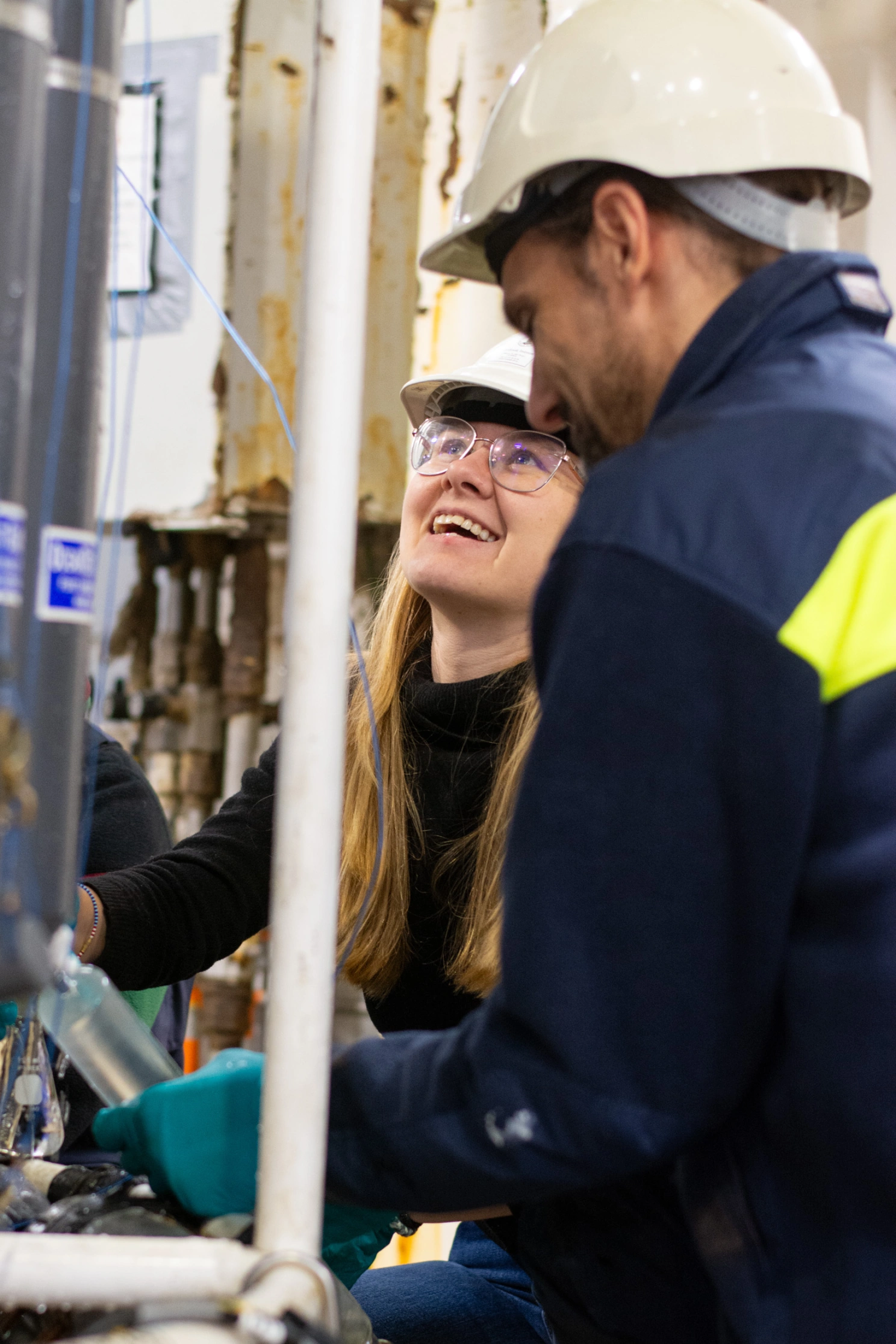
Idunn Hana and Emil Jeansson. Photo: Ellen Viste
While waiting for their turn, the scientists sort samples that have already been collected, get tubes and containers ready for more sampling or, as in this photo, shake containers with water in which chemicals have been added as a first step in an analysis.
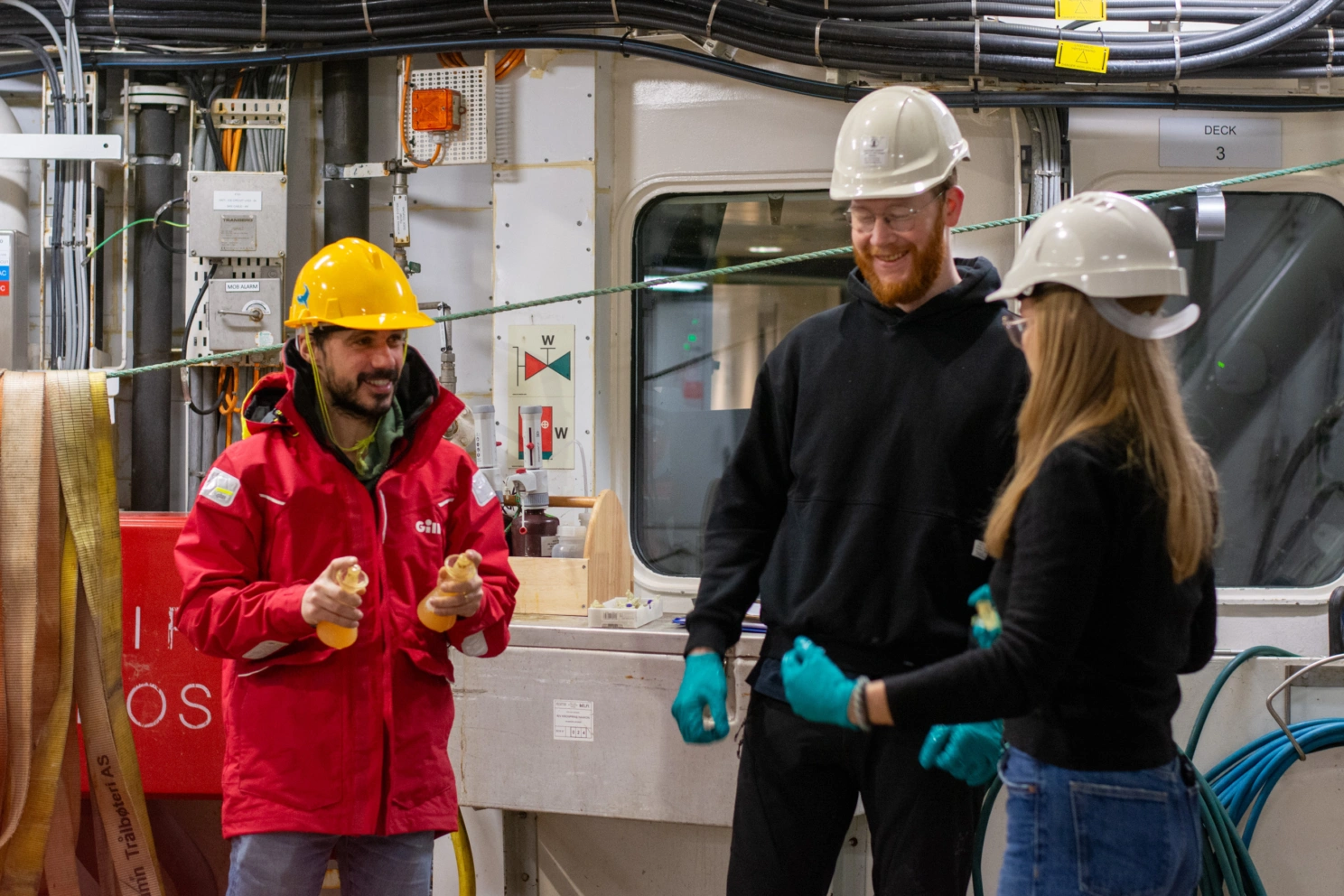
Shaking flasks: Bieito Fernandez-Castro from the University of Southampton and Thorbjørn Østenby Moe and Idunn Hana from the Bjerknes Centre and the Geophysical Institute at the University of Bergen. Photo: Ellen Viste
The numbers on the rosette makes it possible to identify the depth where each bottle was filled with sea water.
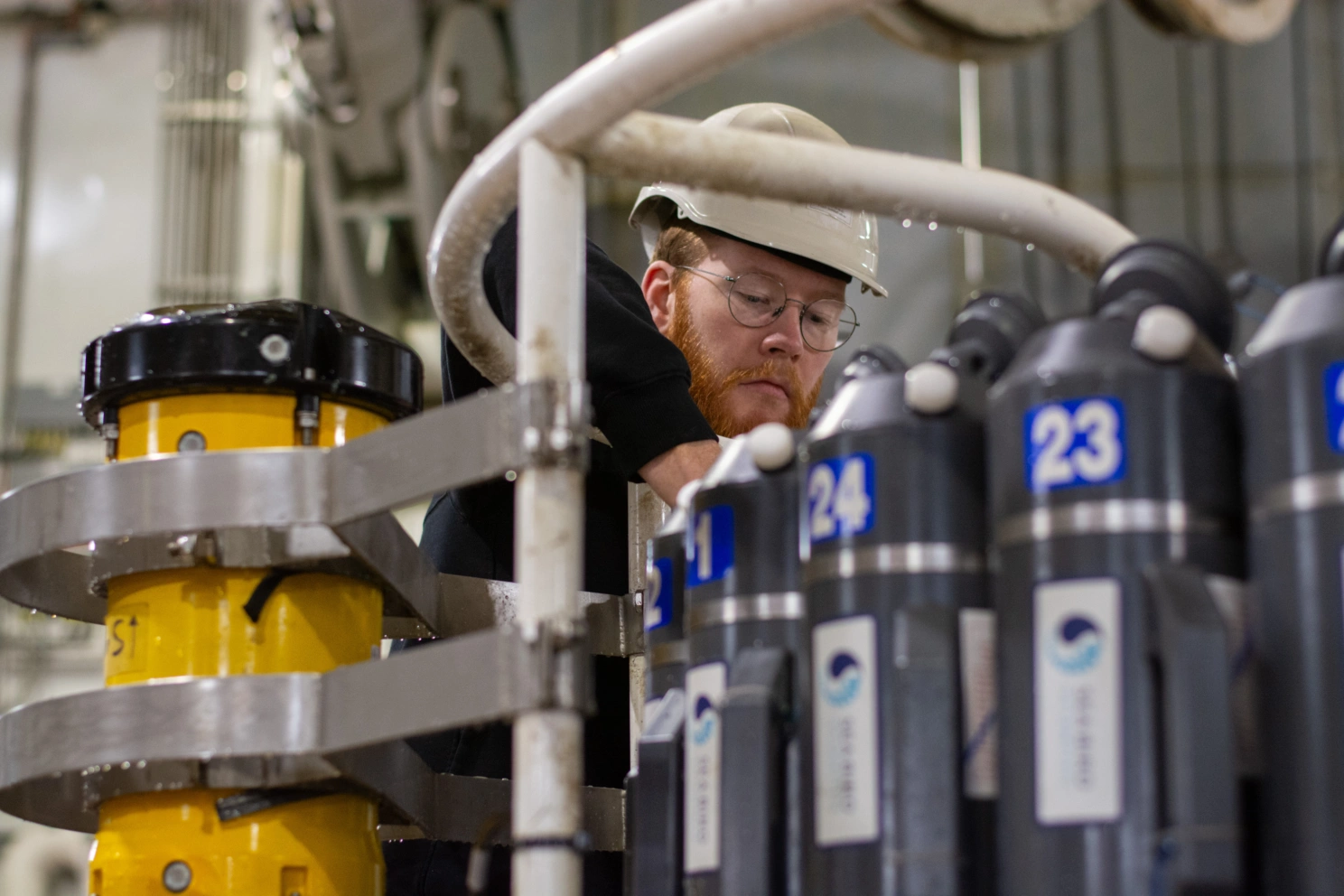
Thorbjørn Østenby Moe. Photo: Ellen Viste
From the hangar, the water samples are taken to the ship's laboratory for analysis.
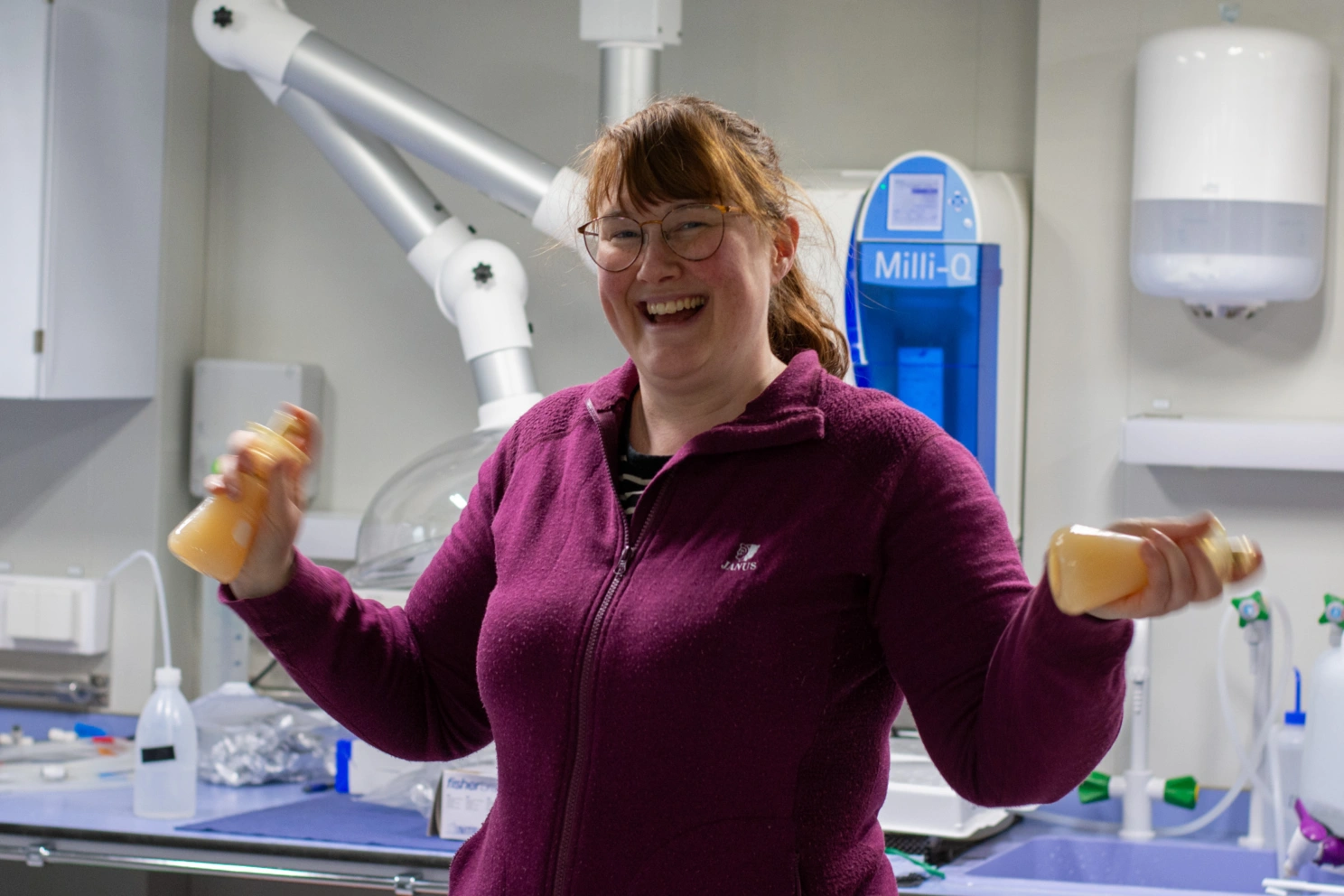
In the lab Kristin Jackson-Misje keeps shaking. Photo: Ellen Viste
The rosette dance is over for this time. All that remains is to empty all bottles and ready the rosette for a new journey into the great depths.

Idunn Hana opens all taps. Photo: Ellen Viste
Related Projects

Resilient northern overturning in a warming climate
In ROVER the researchers will observe the deep-water formation along east Greenland, both through a winter expedition on an icebreaker, using mooring across the Greenland slope, and autonomous underwater gliders. The measurement campaign will provide groundbreaking data, cruical for the understanding of the processes that supply cold, deep water to the lower limb of the AMOC.